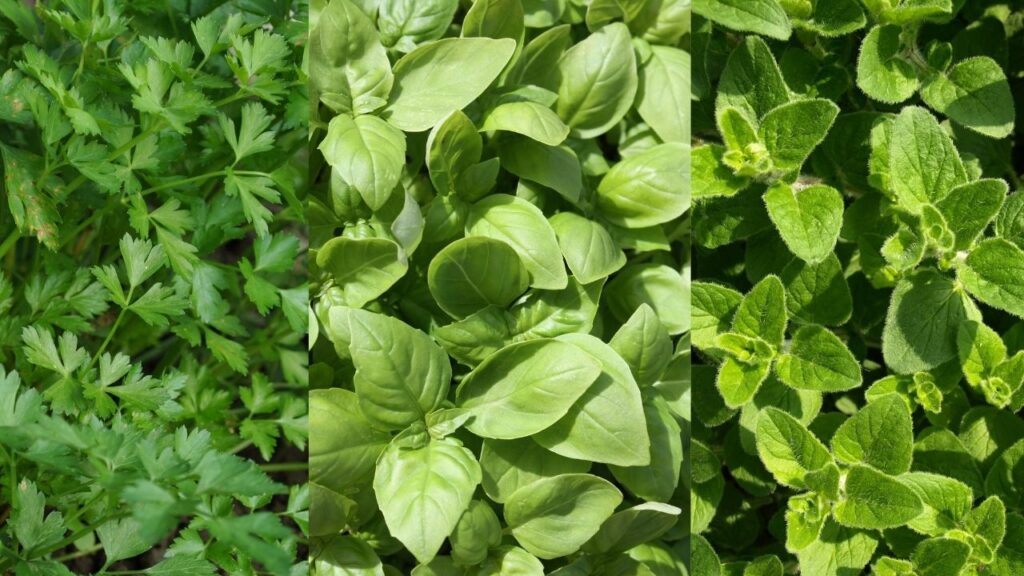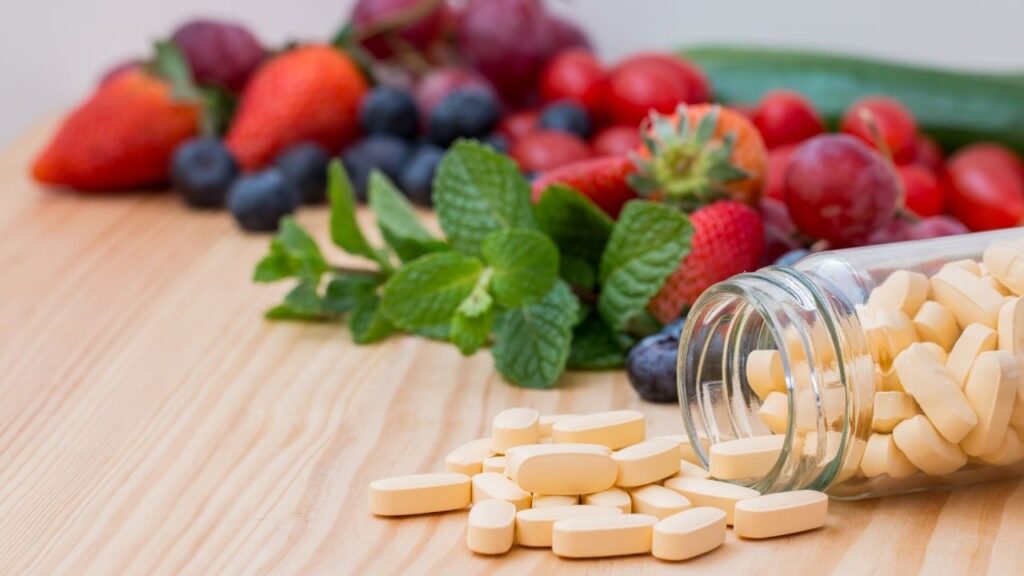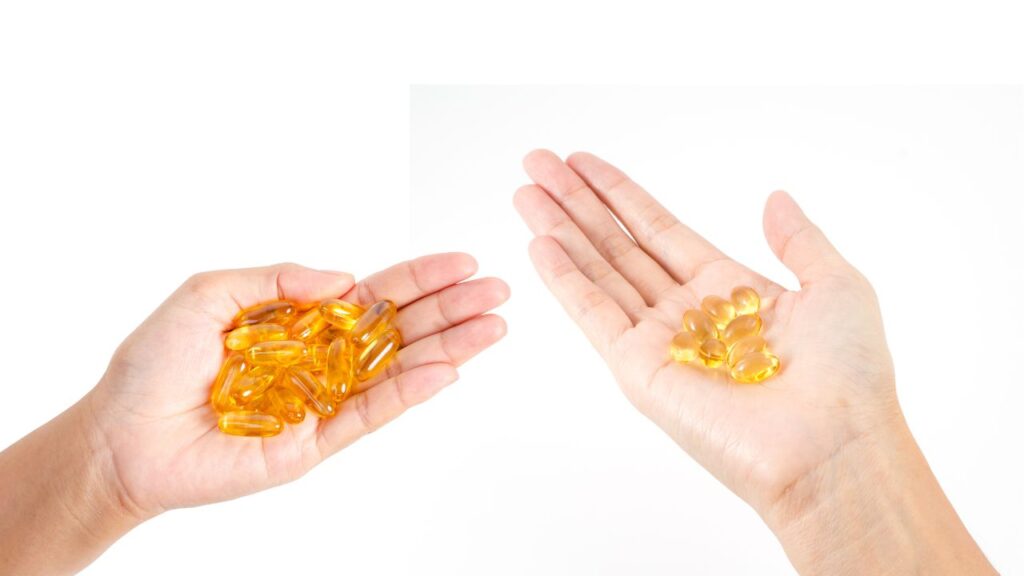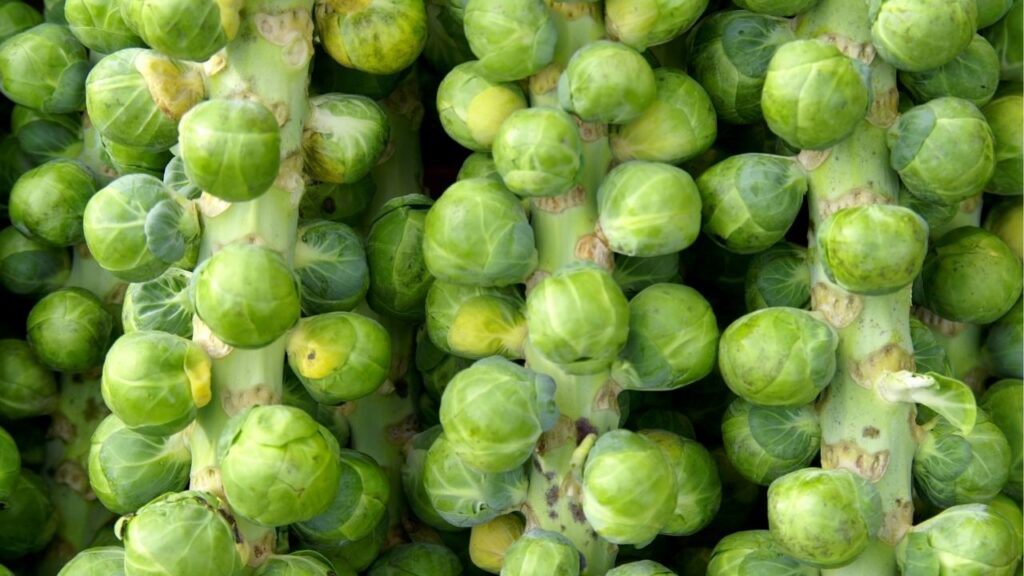Tasty, versatile, and chock full of nutritional compounds that are well-scientifically supported as having anti-cancer properties, berries are a great go-to food item to supplement your dog’s diet.
Key Takeaways
- Berries that are safe for dogs include the blackberry, raspberry, black raspberry, goji berry, strawberry, blueberry, and cranberry.
- Berries and fruit are good for dogs – dark berries in particular have cancer fighting properties.
- Dogs can have blueberries and strawberries in moderate amounts.
- How many berries you give your dog will depend on their weight and other nutritional requirements. For example, a 50-pound dog who eats twice a day can have 1 teaspoon of fresh minced berries added to their food.
What Makes a Berry a Berry?
You may have heard that veterinarians recommend berries for dogs with cancer as tasty treats. That’s true, although not every berry is the best choice for your dog.
Let’s begin our exploration of these yummy bites of goodness by covering what berries are: brightly colored, edible fruits that are typically juicy and rounded with small seeds as opposed to a singular pit.1,2,3
It’s not exactly that simple, however.
- The botanical term for the word “berry” differs from the use of the word in day-to-day language.
- Scientifically, a berry is a fruit that’s produced from the ovary of a single female flower, resulting in a fleshy fruit without a stone or pit.
- Examples of berries we don’t think of as berries in common language include tomatoes, cucumber, chili peppers, and bananas.
This can make things confusing when discussing berries regarding their health benefits. Under the botanical definition stated above, cranberries and blueberries are berries, but raspberries, strawberries, and blackberries are not!4
For this article, we’ll be focusing on berries as we refer to them in day-to-day life – small, rounded fruits that typically have “berry” in their name, like the blackberry, raspberry, black raspberry, goji berry, strawberry, blueberry, and cranberry, among others.
Roscoe the Basset Hound has a True Tail that will blow your mind. His mom, Renee, is a great cook -- and she has lots of advice to share in this DOG CANCER ANSWERS episode.
Berries for Dogs are Healthy and Pack a Cancer-Fighting Punch
A diet higher in fruit has long been associated with a lower risk of cancer.5 A simple online search for keywords like “anti-cancer” and “food” will lead to articles pinpointing fruits and vegetables as an important part of a cancer-fighting diet.
But you may also read that cancer cells thrive off of sugar and carbohydrates.2 Isn’t fruit too sugary, you might ask?
Successfully striking a balance, especially when supporting your dog’s cancer journey via their diet, can be intimidating. How do you give your dog all the benefits that fruits hold while minimizing their carbohydrate and sugar intake?
Here’s where berries swoop in to save the day. Berries are lower in sugar content than most other fruits.3,6 For example, a cup of blackberries only has 7g of sugar, and raspberries only have 5g.6
Let’s take a look at some of these wonderful fruits.
Blueberries for Dogs and Blackberries for Dogs
Dark berries, like blackberries and blueberries, have higher amounts of compounds known to kill cancer cells. Strawberries have higher amounts of compounds that stop the formation of blood vessels (a process called angiogenesis) that feed cancerous tumors.7
These compounds are commonly called “flavonoids,” the core compounds responsible for anti-cancer properties. Flavonoids are common to all berries.
The Power of Flavonoids
Flavonoids are a large group of natural phytochemical compounds that pose a variety of health benefits. They’re known to support cardiovascular health,9 help rid the body of toxins, and assist in repairing damaged DNA, a key cause of cancer.1,7,10
The dominant flavonoids found in berries, like anthocyanins, ellagic acid, quercetin, and kaempferol, can be harnessed by your dog’s body to give them the boost they need to prevent cancer or help fight it.1,7,10
Anthocyanins
These flavonoids also function as the pigments that give some berries rich dark coloring.7 They have anti-inflammatory characteristics, are biologically stable, and have shown chemopreventive properties in numerous studies.7,11 (The word chemopreventive means something that helps lower the risk of developing cancer.)
Blackberries are an excellent source of anthocyanins at 15 to 20 milligrams per gram of dry weight.11
Ellagic Acid
This flavonoid has numerous studies backing its ability to destroy cancer cells and stop their spread.12,13,14,15,16
Broadly, ellagic acid has shown remarkable capability in interacting with metabolic pathways responsible for cell growth, allowing it to target certain processes that can lead to cancer.7
Blackberries have approximately 2 milligrams of ellagic acid per gram of dry weight.14
Quercetin
This compound is found in all berries, but more so in darker ones.1,17 Quercetin has demonstratable anti-cancer and anti-inflammatory properties that have been shown to shrink tumor sizes and increase survival times.17,13
Kaempferol
This flavonoid has been shown to have antioxidant potential with wide evidence of anti-cancer properties.10 Research suggests that it directly interacts with the cell cycle of cancerous cells. Kaempferol is thought to cause this cycle to stop, leaving cancer cells with nothing to do but to enter apoptosis and die.18,10
This phenomenon has been observed across many cancer types, making it a “jack of all trades” when fighting uncontrolled cell growth in the body.10
Berries Have Antioxidants
In addition to being full of flavonoids that have antioxidant capabilities, berries also contain supplementary antioxidants that help defend cells against damage caused by free radicals.7
Free radicals enter the environment and your dog’s body via pollution, cigarette smoke, and other industrial-grade chemicals. These free radicals can eventually cause unregulated cell growth, so removing them from the body is important in preventing cancer.
Antioxidants do just that, and berries like blueberries have an abundance of them ready to take action.19
Dr. Nick Thompson has great advice on how to fight cancer in dogs on this DOG CANCER ANSWERS episode.
More Health Benefits from Berries
- Berries are highly fibrous, in most part thanks to their many small seeds. Raspberries and blackberries contain 8 grams of fiber per cup. This supports digestive health and regular bowel movements.
- Though related to flavonoids, resveratrol is a non-flavonoid compound with similar functions and benefits. Its primary purpose in berries is to protect them against injury or attack from fungi and bacteria.24 In other organisms, resveratrol has been shown to have anti-inflammatory, anti-aging, anti-tumor, and antioxidant effects.24
- Trace minerals, such as manganese, magnesium, iron, calcium, zinc, and phosphorus, are readily available in berries.8,26 These minerals are important for maintaining healthy metabolic function in your dog’s body and incur additional benefits such as supporting healthy joints and bone mineral density.
- Berries are high in vitamins C, A, and K,1 which are always great additions to your dog’s diet due to their ability to boost the immune system.2
- Berries can help to reduce inflammation, which can help counteract aging and lessen arthritis pain.27
- The high density of water in most berries, particularly strawberries, ensures hydration.
- Berries are a go-to option for dogs who are overweight or diabetic because they are low in calories and sugar.
Blueberries for Dogs Who Exercise
Berries may also benefit dogs who have high exercise regimens or activity levels.
A study on 36 sled-racing dogs broke them into three groups of twelve.19 The first served as an experimental group subjected to a 30-minute high-intensity physical training exercise and fed a diet supplemented with blueberries. The second was subjected to the same training exercise but fed a diet without blueberries, and the third was neither subjected to physical training nor given blueberries.
Researchers found that while observed muscle damage was no different between the two groups that underwent the training exercise, the group whose diet was supplemented with blueberries had a higher total level of antioxidants in their bodies, suggesting that blueberries could provide a protective element against muscle damage if it were to occur.
Research on Berries and Cancer is Lacking…
Studies that have specifically examined the anti-cancer potential of berries as a food item are lacking. Most research focuses on fruit as a food group and its connection to cancer risk.
For example, a study examining lifestyle factors, including diet, on cancer risk in humans found that a higher fruit intake overall was associated with a lower risk of prostate and breast cancer.5
A similar study was done in dogs, albeit with very different results. Researchers compared 86 healthy female dogs to 102 female dogs with mammary gland tumors.20 Answers to questionnaires regarding body conformation, diet, and reproductive history coupled with the analysis of fat tissue revealed no connection between a dog’s consumption of fruits and their risk of mammary cancer.
…But Research on Flavonoids and Cancer is Not
What’s much better scientifically studied is the connection between the important flavonoids found in berries and their anticancer properties.
This research spans multiple approaches in determining mechanistic actions and efficacy but predominately focuses on studying cancer cell lines in humans and model organisms like rats and mice.
Unfortunately, Studies in dogs are absent, although their similarity to humans in terms of cancer means we can use the information in dogs, too.
Studying Flavonoids in the Lab and in Animal Models
Cancer cell lines allow scientists to work with cancer cells directly in the lab. This is important for understanding how certain compounds impact cellular processes in unhealthy cells.
Unfortunately, isolated and controlled laboratory results don’t always translate to real life. Your dog’s cancer cells are continuously influenced by countless internal and external factors that may impact how a flavonoid may interact with it.
Regardless, the scientific literature on flavonoids and their anti-cancer properties is dense and promising. In addition to studies on cancer cell lines, researchers have expanded to animal models to help better understand the applicability of their findings to multi-dimensional live organisms.
Below are some highlights of the anticancer abilities of flavonoids that dominate berries.
- A study that investigated the impact of ellagic acid on human cervical cancer cells found that ellagic acid stopped the cell cycle within 48 hours, meaning that the cancer cell was never given a chance to divide.12 After 72 hours, cells started undergoing apoptosis, or programmed cell death, resulting in their demise.
- Researchers examined the effect of quercetin and ellagic acid on human leukemia cells and human breast cancer cells. They found that quercetin caused significantly greater toxic effects than ellagic acid in leukemia cells, but not breast cancer cells.13 Interestingly, the effect appeared to be dose-dependent, with greater concentrations of quercetin resulting in more apoptotic cells observed.
- Scientific work which exposed human renal cancer cell lines to kaempferol saw a significant inhibition of cell growth, the induction of apoptosis, and a halt in the cell cycle compared to the control group of cells not exposed to kaempferol.10 Similarly, kaempferol has been found to induce anticancer activities in the human bladder, blood, bone, brain, breast, cervical, colon, kidney, liver, lung, oral, ovarian, pancreatic, prostate, and stomach cancer cell lines.10
- Similar to the effect of kaempferol on human cancer cell lines, the same has been observed in animal cell lines. Cancer cell lines harvested from mice exposed to kaempferol have shown anticancer properties in bladder, lung, and prostate cancer. Likewise, cancer cell lines harvested from rats and exposed to kaempferol have shown anticancer properties in brain, liver, and pancreatic cancer.
The same hopeful results resound in studies involving live animals or their tissues. One group of scientists cultured esophageal tissue from the esophagus of a rat and studied how the DNA of that tissue was impacted by ellagic acid.16 Results showed that ellagic acid inhibited N-nitrosobezylmethaylamine, or NBMA for short, from binding to DNA. Given that NBMA is a known carcinogen associated with esophageal cancer, the finding was an important component of understanding how ellagic acid aids in cancer prevention.
Studying Flavonoids in Animal Diets
Because your dog will be eating berries, and thus acquiring flavonoids by mouth, it is important to touch on studies that examined the impact of flavonoids supplemented to animals as part of their diets. As you may have already guessed – these show the same assurance of the power of flavonoids.
- A study that fed mice with lung and liver cancer four grams of ellagic acid per kilogram of weight found that tumor growth was reduced by 54%.14 Researchers showed that ellagic acid preferentially localized to the lungs, rather than the liver, potentially demonstrating that ellagic acid could be particularly helpful for dogs with lung cancer.
- Another study aimed to test the effects of ellagic acid on male rats with tumors in the intestine.21 The study found that orally administered ellagic acid had no significant effect on reducing the risk of rats developing colon cancer, but did show a significant inhibitory effect on the development of cancer in the small intestine.
- One study compared ellagic acid and quercetin.13 Mice with breast adenocarcinoma were orally administered one milligram of quercetin or three milligrams of ellagic acid per kilogram every three days. After the tenth day, treated mice showed a reduction in tumor volume. Interestingly, this reduction was greater in mice that were fed quercetin than in mice that were fed ellagic acid. In addition, 40% of the mice treated with quercetin had a fivefold increase in lifespan in comparison to untreated control mice who did not receive either treatment.
Ellagic acid has even shown promise when applied topically. A study that treated mice with ellagic acid over the course of 16 weeks found that those exposed were significantly less likely to develop induced skin tumorigenesis compared to mice in the control group.15
Talk to Your Vet Before Adding Berries
Our standard advice is to consult your veterinarian before adding berries to your dog’s diet.
It’s also a good idea to review the types of berries, as some are poisonous to dogs. These include gooseberries, holly berries, juniper berries, pokeberries, and dogwood berries.3 Just because “berry” is in the name doesn’t mean it’s safe for them to eat.
In some cases, berries may not be the best choice for your dog.
- Berries may present a choking hazard and not be a good addition to give whole if your dog eats quickly.
- Berries are also low calorie and full of fibrous material that helps your dog feel full, which means that they may not wholistically benefit dogs who are underweight or lack an appetite due to their cancer or cancer treatments.3
Like all foods, moderation is key. Too many berries may upset your dog’s stomach. Larger dogs should not have more than 8-10 blueberries at a time, which should be scaled down even further for smaller dogs.22
No negative side effects were noted in a study that gave mice with breast cancer one milligram of quercetin per kilogram of weight by mouth every three days.13
All dogs are different, and, although unlikely, it is always possible that your dog may have a poor reaction to a novel food item. Your veterinarian can help you decide how many berries are appropriate for your dog and their health needs, particularly if you seek to maximize the benefits berries offer.
But What About the Xylitol in Berries?
You may have heard that blackberries and raspberries contain xylitol, a naturally occurring sweet-tasting compound toxic to dogs. The good news is that these berries contain very small amounts of xylitol, and your dog would have to eat a massive amount for it to be an issue.3
For example, a 22-pound dog would have to eat 32 cups of raspberries before reaching poisonous levels of xylitol.3
Antioxidants as a Hindrance to Cancer Treatment
It’s important to mention that all the antioxidant power berries hold may be detrimental to your dog’s cancer treatment.2 The whole point of chemotherapy and radiation is to destroy cancer cells by introducing free radicals that target and kill them. But remember above when it was mentioned that antioxidants are great at removing free radicals from the body?
This is where the problem comes in. Those antioxidants may work to destroy the free radicals introduced by conventional cancer treatments before they can do their job.2
Berries in smaller amounts like the ones outlined above — or given as treats — are likely fine, but be sure to raise this point with your oncologist if you are considering berries, and your dog is undergoing chemotherapy or radiation treatment.
Prepping Berries is Easy!
Berries don’t require much in terms of preparation. For fresh berries, remove any stems or leaves that may be attached, and be sure to wash them under running water to remove dirt, insects, or residue from pesticides and herbicides.
You can also buy frozen, dried, or blended berries,7 but this may impact their nutritional content. For example, fresh black raspberries lost over 20% of their content when freeze-dried.23
Regardless of condition, you’ll want to scan and remove berries with mold or aging signs that suggest they’ve gone bad.
Canned berries or berries in syrup are not recommended for dogs because they’re loaded with extra sugar and calories. Stick to the most natural form of the berry as possible. Similarly, avoid artificial berry products, as these can have additive chemicals that can harm your dog.
Guess what's on Dr. Susan Recker's list of best foods for dogs with cancer? Berries! Listen in for the rest on this episode of DOG CANCER ANSWERS.
Creative Ways to Introduce Berries into Your Dog’s Diet
Incorporating berries into your dog’s diet is easy and can be an opportunity to get creative. You may mix them with your dog’s food, use them as a reward, or incorporate them into homemade dog biscuits. Berries are easy to carry and transport on the go, making them a good choice for when you are out with your dog.7
Here are some ideas:
- Give your dog frozen berries as a nice frozen treat when it’s hot.
- Add dried berries to your dog’s favorite toy or snuffle mat.
- Puree berries for a unique texture to keep your dog’s diet interesting. You can give this puree alone or add it to other cancer-fighting foods.
- You can manually mash whole berries and add them to your dog’s food or smear them on a surface.
- You can sprinkle smaller berries, like blueberries, onto your dog’s food. If you are concerned about a choking hazard, mince them. For example, you can add one teaspoon of minced fresh berries to your dog’s food for a 50-pound dog fed twice daily.2
- You can add berries to a homemade dog treat recipe for your dog.
Regardless of how you present them, you’ll want to introduce berries to your dog gradually to not upset their stomach.7 The quantity you give to your dog will depend on their weight and other nutritional requirements. For example, it’s suggested that a 50-pound dog who eats twice a day has 1 teaspoon of fresh minced berries added to their food.2
Remember that berries come in all sorts of flavors, ranging from sweet to sour to tart.3 Your dog may prefer one over another, which you’ll discover as you go. Similarly, if your dog won’t eat one type of berry, switch it out and try another.
Where to Purchase Berries
You can purchase berries at the grocery store, online, farmer’s markets, and “u-pick” farms, or grow them yourself.
While berries grow naturally in the wild, it is best to avoid feeding these to your dog – rather, you should stick to store-bought or ones you grew yourself. You may misidentify wild berries, which can have catastrophic consequences if a variety is toxic to dogs.3
Should I Buy Organic Berries?
Buying organic is the way to go when it comes to berries because they’re one of the industry’s most heavily treated cultivated fruits.25 Strawberries and blueberries are two of the top 12 fruits most exposed to pesticides, and these chemicals in and of themselves can be carcinogens.25
If you cannot purchase organic berries, be sure to rinse them heavily under running water to ensure you remove as much of the pesticide and herbicide residue as possible.
You may see berries commonly incorporated or listed as an ingredient in commercial dog treats. Unfortunately, these treats likely don’t contain enough actual berry for your dog to gain any benefits, so it’s best to still stick with what you can get naturally and organically.
Topics
Did You Find This Helpful? Share It with Your Pack!
Use the buttons to share what you learned on social media, download a PDF, print this out, or email it to your veterinarian.









